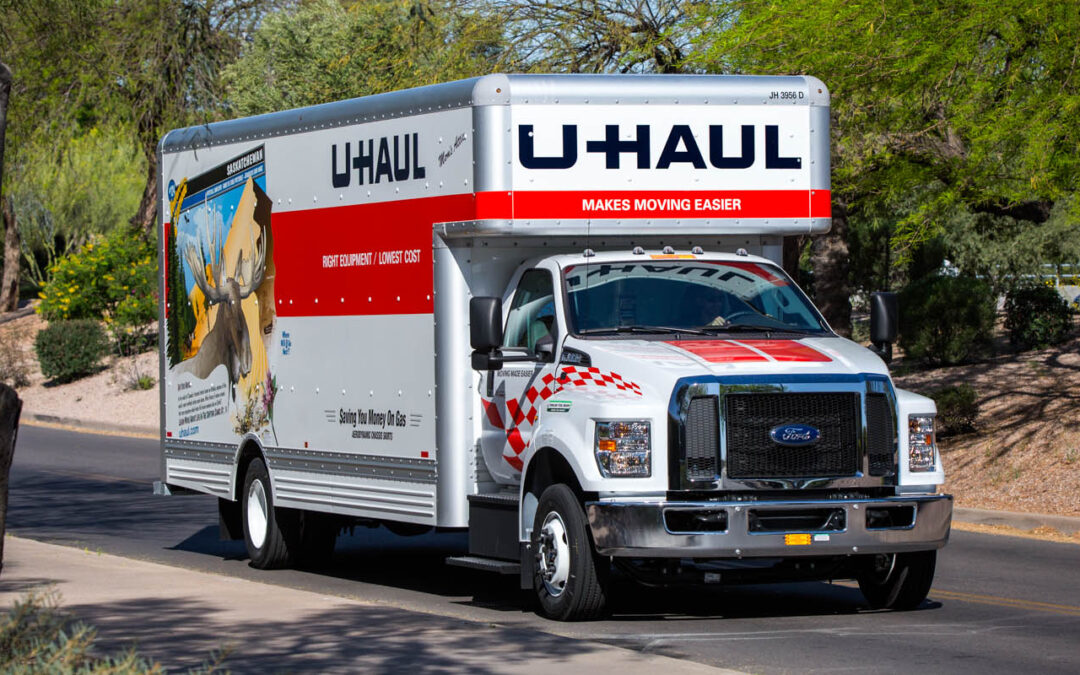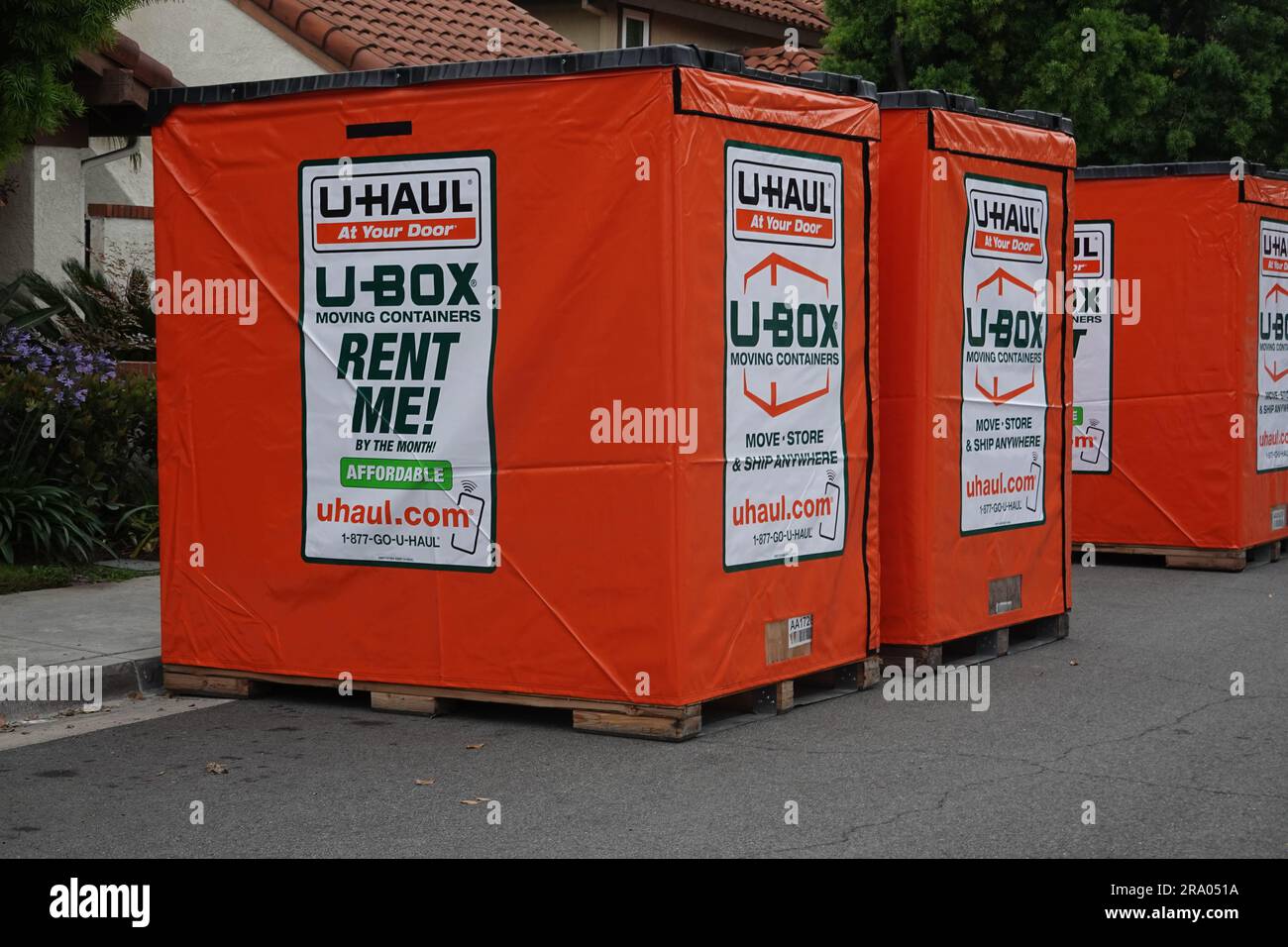Navigating U-Haul’s Mileage Policies: Dispelling the ‘Unlimited Mileage’ Myth
Navigating U-Haul’s Mileage Policies: Dispelling the ‘Unlimited Mileage’ Myth cars.truckstrend.com
Moving, whether across town or across the country, often involves renting a truck, and U-Haul is a ubiquitous name in the industry. As people plan their relocations, a common desire, or perhaps a misconception, that surfaces is the idea of "U-Haul with unlimited mileage." The appeal is obvious: boundless freedom to drive without worrying about accumulating costly per-mile charges. However, it’s crucial to understand that U-Haul does not, in fact, offer true unlimited mileage on their rental trucks.
This article aims to clarify U-Haul’s actual mileage policies, explain how their system works for both local and one-way rentals, and provide comprehensive strategies for managing your moving budget effectively, even without the elusive "unlimited mileage." By understanding the nuances of U-Haul’s pricing, you can plan your move with confidence and avoid unexpected costs.
Navigating U-Haul’s Mileage Policies: Dispelling the ‘Unlimited Mileage’ Myth
The Reality of U-Haul’s Mileage System: No True "Unlimited Mileage"
Let’s start by directly addressing the myth. Unlike some car rental agencies that might offer unlimited mileage for certain short-term rentals, U-Haul’s business model for moving trucks is fundamentally different. Their pricing structure is designed around two primary rental types, each with distinct mileage considerations:
- Local (In-Town) Rentals: These are typically for moves within the same city or metropolitan area. For local rentals, U-Haul charges a daily base rate plus a per-mile charge from the very first mile.
- One-Way Rentals: These are for moves where you pick up a truck in one location and drop it off in a different city or state. For one-way rentals, U-Haul provides a flat rate that includes a pre-determined mileage allowance. If you exceed this allowance, you will incur an additional per-mile charge for every mile over the limit.
Therefore, the concept of "unlimited mileage" is a misnomer when it comes to U-Haul. The closest you get is the included mileage allowance for one-way rentals, which, while generous for the intended route, is by no means infinite.
Local Rentals: The Per-Mile Charge Explained

For those moving within a relatively confined area, local U-Haul rentals are a popular choice. The pricing for these rentals is straightforward:
- Base Rate: This is a fixed daily charge for the truck itself, which varies based on truck size (e.g., 10-foot truck, 26-foot truck) and location/demand.
- Per-Mile Charge: On top of the base rate, you pay for every mile you drive. This per-mile rate can vary significantly based on location, truck availability, and even the day of the week, often ranging from $0.69 to $0.99 per mile.

How it works: When you pick up the truck, the odometer reading is noted. When you return it, the final reading is taken, and you are charged for the total miles driven. Even a short trip across town can quickly add up if you make multiple stops or take an inefficient route.
Strategies for Minimizing Mileage in Local Rentals:
- Plan Your Route Meticulously: Before you even pick up the truck, map out your entire moving day. Identify the most direct routes between your old home, any storage units, friends’ houses (if picking up items), and your new home. Use GPS with traffic information.
- Consolidate Trips: Avoid unnecessary back-and-forth trips. Try to load everything in one go, or at most, two well-planned trips.
- Pack Efficiently: The more you can fit into the truck per trip, the fewer trips you’ll need to make, and thus, fewer miles you’ll drive.
- Confirm Drop-Off Location: Ensure you know the exact return location for the truck to avoid driving extra miles looking for it.

One-Way Rentals: The Bundled Mileage Allowance
One-way rentals are designed for long-distance moves and offer a different pricing model that can feel like it includes "unlimited" mileage for the intended journey.
- Flat Rate: You pay a single flat rate for the rental, which covers the truck for a specific number of days and includes a pre-calculated mileage allowance. This flat rate varies significantly based on the origin and destination cities, the size of the truck, the time of year, and demand.
- Included Mileage Allowance: U-Haul calculates this allowance based on the most direct and efficient route between your specified pickup and drop-off locations. For example, a move from New York City to Miami might come with a 1,300-mile allowance.
- Per-Mile Charge for Overages: If you drive more miles than the allowance provided, you will be charged an additional fee for each excess mile. This overage rate is typically lower than the local per-mile rate, but it can still add up.
How it works: When you book a one-way rental, U-Haul’s system automatically determines the included mileage based on the shortest driving distance between your chosen locations. This allowance is clearly stated in your rental agreement.
Strategies for Managing Mileage in One-Way Rentals:
- Be Accurate with Your Destination: Ensure you provide U-Haul with your precise drop-off city/state. Any changes after booking might alter your mileage allowance or incur fees.
- Stick to the Designated Route: While you have some flexibility, aim to stay as close as possible to the most direct path between your origin and destination. Unplanned detours, sightseeing, or visiting relatives far off course can quickly eat into your allowance.
- Factor in Stops: Account for necessary stops like gas stations, rest areas, and overnight stays when estimating your total mileage. These are part of your journey.
- Understand the Overage Charge: Know what the per-mile overage charge is for your specific rental. This helps you weigh the cost of a detour against its benefit.
Practical Advice and Actionable Insights
Regardless of whether you choose a local or one-way rental, smart planning is key to managing your mileage costs.
- Read Your Contract Carefully: Always review your U-Haul rental agreement before signing. It will clearly state your base rate, per-mile charge (for local), or your flat rate and included mileage allowance (for one-way), and the cost of any excess miles.
- Utilize Online Tools: U-Haul’s website allows you to get quotes for both local and one-way rentals, which will show you the estimated mileage for one-way trips. Use mapping services (like Google Maps) to plan your routes and estimate distances for local rentals.
- Consider Rental Duration: For one-way moves, U-Haul provides a specific number of days for your rental. While this doesn’t directly impact mileage, rushing can lead to mistakes or poor route choices. Give yourself ample time.
- Refuel Before Returning: Always return the truck with the same fuel level as when you picked it up to avoid costly refueling charges from U-Haul. While not mileage-related, it’s a common hidden cost.
- Compare Truck Sizes: Sometimes, renting a slightly larger truck might enable you to complete your move in fewer trips (for local rentals) or with less need for additional vehicles, indirectly saving on overall mileage costs.
Pricing Table: Understanding U-Haul’s Mileage Costs
As "unlimited mileage" doesn’t exist, here’s a table illustrating how mileage impacts U-Haul pricing for typical rentals. Please note: All rates provided are examples only and can vary significantly based on location, truck size, demand, time of year, and specific rental details. Always get a direct quote from U-Haul for accurate pricing.
| Rental Type | Mileage Policy | Example Base Rate (Daily/Flat) | Example Per-Mile Rate (After Allowance) | How Allowance is Determined (One-Way) | Notes on Total Cost Calculation |
|---|---|---|---|---|---|
| Local Rental | Per-mile charge from 0 miles | Truck Size Dependant: 10′ Truck: ~$19.95 – $29.95/day 26′ Truck: ~$39.95 – $49.95/day |
~$0.69 – $0.99 per mile (varies) | N/A (no allowance) | Total Cost = Base Rate + (Total Miles Driven × Per-Mile Rate) |
| One-Way Rental | Bundled mileage allowance + per-mile charge for overages | Varies Widely: From $199 for short distances to $2,000+ for cross-country moves. | ~$0.40 – $0.80 per mile (varies) | Calculated based on the shortest direct route between your specified pickup and drop-off locations. | Total Cost = Flat Rate (includes allowance) + (Excess Miles Driven × Per-Mile Overage Rate) |
Important Considerations for the Table:
- Base Rates: The daily base rate for local rentals does not include taxes, environmental fees, or insurance options.
- Per-Mile Rates: These rates are highly dynamic and can change based on demand and location. Always confirm the exact rate with U-Haul.
- Flat Rates (One-Way): These comprehensive rates typically include the truck rental for a set number of days and the pre-calculated mileage allowance.
- Overage Rates: The per-mile charge for exceeding the one-way allowance is usually lower than the local per-mile rate, but it’s still an additional cost.
Frequently Asked Questions (FAQ)
Q1: Does U-Haul offer true unlimited mileage for any of its rentals?
A1: No, U-Haul does not offer true unlimited mileage. All rentals are subject to mileage charges, either per mile from the start (local rentals) or for miles exceeding a set allowance (one-way rentals).
Q2: How is the mileage allowance calculated for a one-way U-Haul rental?
A2: The mileage allowance for one-way rentals is calculated based on the shortest, most efficient driving route between your specified pickup and drop-off locations. It’s designed to cover the direct travel distance.
Q3: What happens if I go over my mileage allowance on a one-way rental?
A3: If you exceed your included mileage allowance, you will be charged an additional per-mile fee for every mile driven over the limit. This fee is specified in your rental agreement.
Q4: Can I get a quote that includes all mileage costs upfront?
A4: For local rentals, U-Haul provides the daily base rate and the per-mile charge, so you’ll need to estimate your total mileage. For one-way rentals, the flat rate you’re quoted includes the mileage allowance, so any additional mileage costs would only apply if you exceed that allowance.
Q5: Are there any hidden fees related to mileage?
A5: There are no "hidden" fees if you read your contract carefully. The per-mile charges for local rentals and overage charges for one-way rentals are clearly stated. The "hidden" aspect often comes from renters not fully understanding these terms or underestimating their driving distance.
Q6: What’s the best way to estimate my mileage for a local move?
A6: Use an online mapping service (like Google Maps) to plot your route between your old home, any stops, and your new home. Multiply the estimated distance by the number of trips you anticipate making. Add a buffer for unexpected detours.
Q7: Can I change my drop-off location for a one-way rental to save on mileage?
A7: Changing your drop-off location can significantly impact your rental cost, including the mileage allowance. It’s best to confirm your final destination when booking to get the most accurate quote and mileage allowance. Changes after booking may incur additional fees.
Conclusion: Plan Smart, Move Confidently
While the dream of "U-Haul with unlimited mileage" remains just that—a dream—U-Haul’s transparent pricing structure, when understood, allows for highly efficient and budget-friendly moves. By grasping the difference between local per-mile charges and one-way bundled mileage allowances, and by applying practical strategies for route planning and efficiency, you can effectively manage your moving costs.
The key takeaway is preparation. Accurately estimate your needs, read your rental agreement thoroughly, and plan your journey down to the last mile. With careful consideration, your U-Haul rental will serve as a reliable partner in your relocation, ensuring your belongings arrive safely without breaking the bank on unexpected mileage charges.






